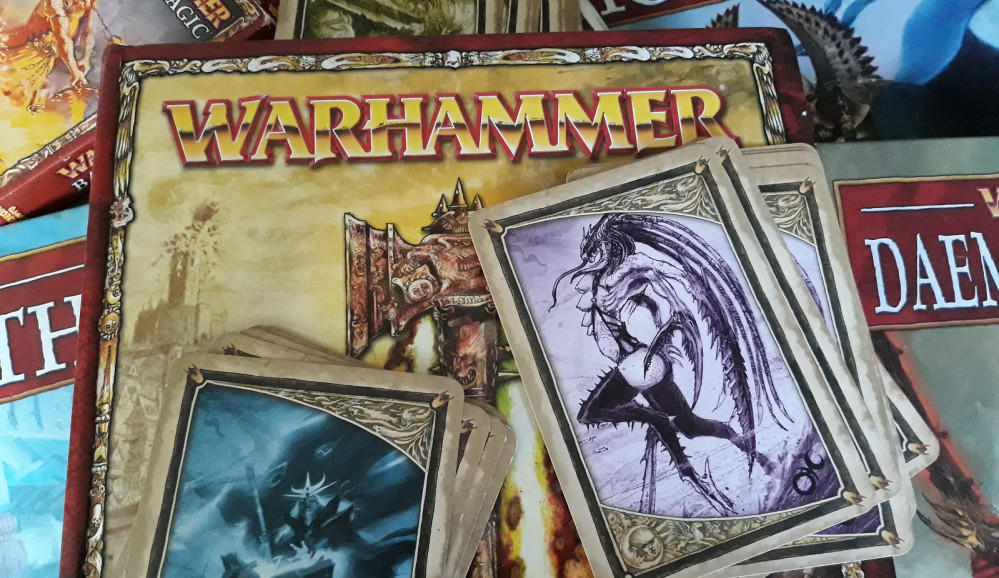
Warhammer Fantasy Revisited
Playtesting Siege Rules
Appendix 4 of the 6th ed WHFB Main rulebook covered rules on fighting a siege. There were further developed in the excellent General’s Compendium for the same edition. I’ve never actually played a siege game and was curious about the way the rules would interact with the 9th edition core rules so decided to run a test game. OK, I’ll be honest – this is all with a view to perhaps one day playing out a large scale version of the siege of Middenheim, but we won’t go admitting to that one quite yet 😉
I used the basic siege rules for 6th ed without any of the additional content form the General’s Compendium. My main observations follow:
- Having the siege towers move at the base movement value of the unit pushing them (so 4 inches per turn) meant that they fell to shooting before they could get near the wall. The defending cannon in the top of the fortified manor in the centre of the board behind the wall may have been overkill (although mounting cannons in the defensive walls of a city does not appear unreasonable to me). May need to up the defensive stats of the siege towers, increase their movement (an upgrade so they can be hauled more rapidly by a monstrous beast perhaps?) or just add more siege towers to split fire?
- Battering rams had a similar issue with regard to movement. Attackers were languishing under concentrated fire trying to bring the rams forward, which is realistic I suppose. Perhaps need to add mantles or a cover save for troops pushing the ram due to the protection of the ram?
- Having missile units deploying behind infantry units armed with siege weapons meant that it was several rounds before they could get into range with their opposite numbers. These should have been deployed ahead (along with infantry units with ladders and grappling hooks) to engage/annoy defenders and prevent fire being concentrated on the siege towers.
- Using two artillery dice for the scatter effect of indirect mortars seemed to work OK – next time think I will swap out one of the scatter die for a standard d6 for indirect fire, meaning even a direct hit will scatter somewhat (more realistic). ie, indirect fire mortars roll a scatter, artillery and a standard d6 to determine where the shot lands. on a ‘hit’ it just scatters the value of the d6, on a scatter result add the d6 and result on the artillery die.
- Walls can disappear with one lucky hit form a stone thrower or swing from a giant’s club. Might need to revisit the rules to reduce the chance of a breach happening on one lucky set of rolls.
- Large monsters will apparently make great living siege weapons.
- If/when attempting the Middenheim siege game will probably need to look at having two sets of walls (ie outer wall and inner wall, or even a fortified keep within that) to maintain the siege element for more than a few turns.
- If attempting the above will also need a bigger tabletop. This game was on an 8×4 and was really compressed (attacking units were blocking one another). If doing the game properly would need to be on an 8×8 or possibly an 8×12 table…
- Having troops sally out to meet the opposing force worked a lot better than anticipated.
- Magic was interesting. Not a game changer but certainly helped to thin out the battlements.
- No use of flyers in this one (Empire had one captain on a Pegasus prepared to counterattack when units made it through the breaches but I stopped before hitting that point). Unsure how dedicated squads of flyers hunting down warmachines would have impacted the game (ie not sure if they would have been successful or outright shot to ribbons).
So interesting to work through a siege scenario. Of course if doing the Middenheim siege then there would be Skaven arriving from under the city at inopportune moments, cultists starting riots near the main gate etc so plenty of other elements to keep things interesting…













































































Leave a Reply